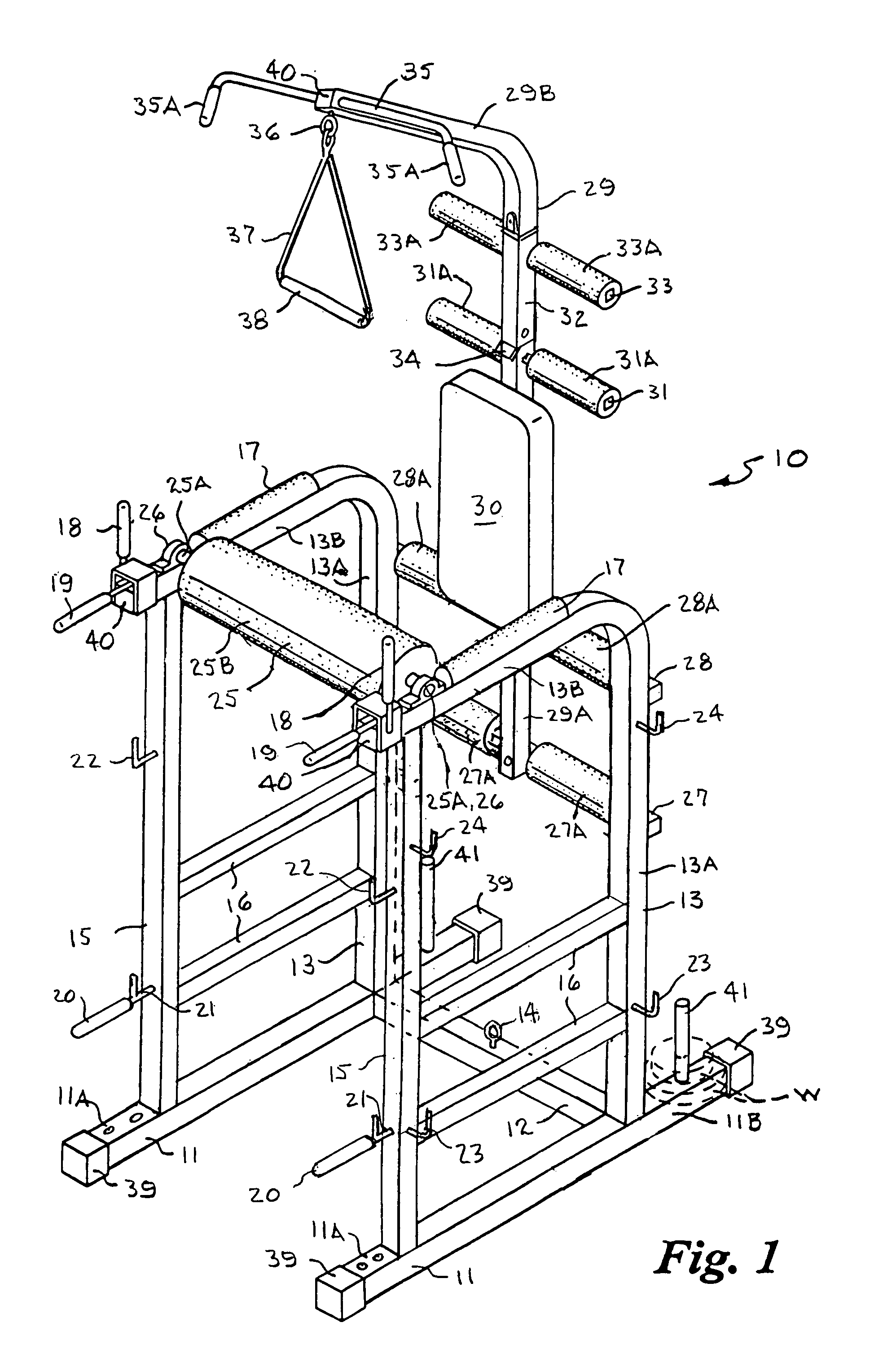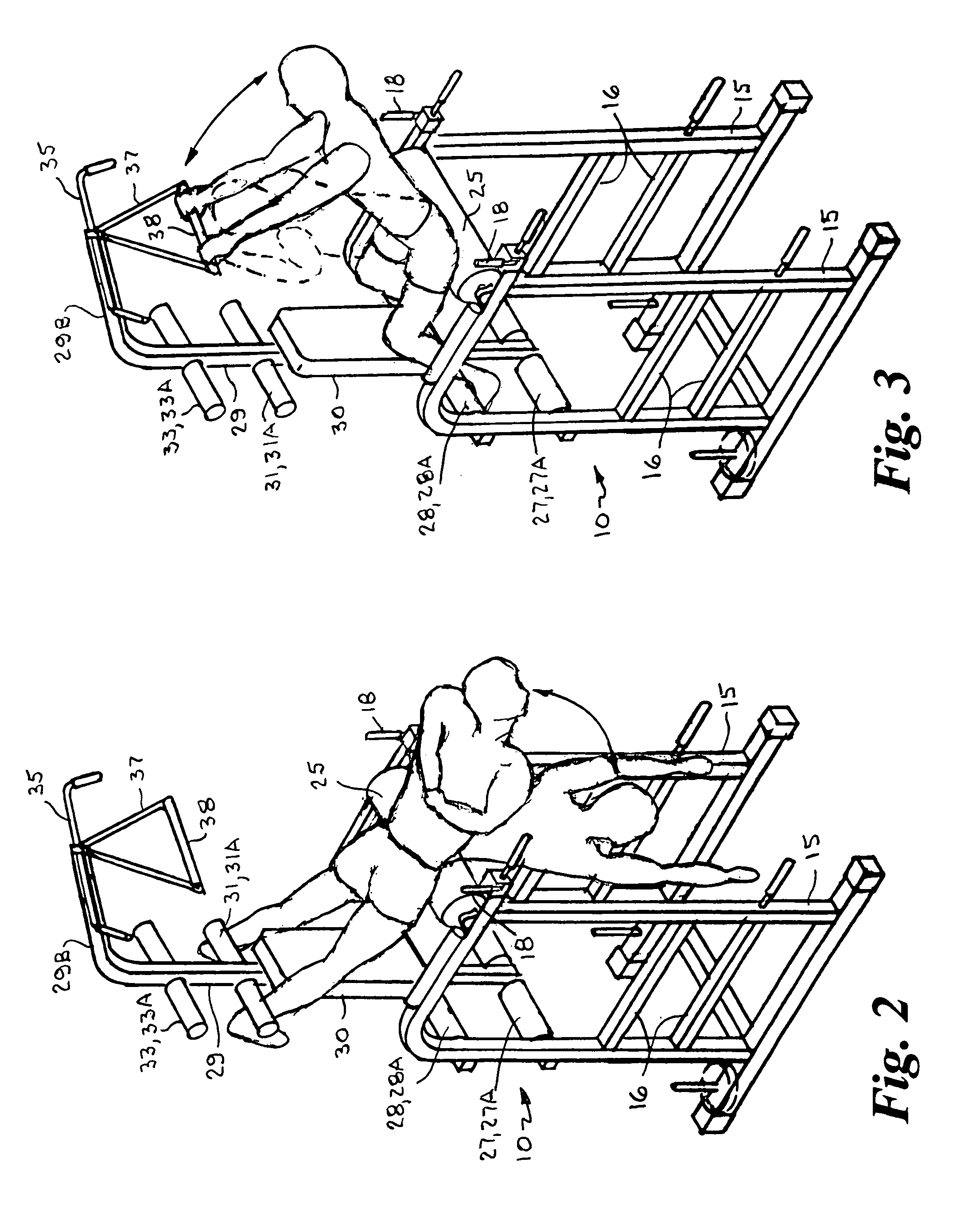Apparatus for back therapy and multiple exercises
a back and back therapy technology, applied in the field of back therapy apparatus, can solve the problems of affecting both of these structures, extensive and complex musculature of the vertebrae column, and clinical problems, and achieve the effect of strengthening the trunk and back muscles of the user
- Summary
- Abstract
- Description
- Claims
- Application Information
AI Technical Summary
Benefits of technology
Problems solved by technology
Method used
Image
Examples
Embodiment Construction
[0041]Referring to the drawings by numerals of reference, there is shown in FIG. 1, a preferred a back therapy and exercise apparatus or station 10. The principle structural frame members of the station 10 are preferably constructed of square or rectangular cross section steel tubing, as is common practice for exercise equipment. The individual members are joined by welding or by mechanical fasteners as appropriate to facilitate assembly and disassembly, and compact storage and shipping.
[0042]The station 10 is supported on the floor by a pair of elongate tubular base members 11 joined together in parallel laterally spaced relation by a tubular base transverse cross member 12 near their rearward ends. A pair of tubular lateral rear upright members 13, having a generally inverted L-shaped configuration, are each connected at their bottom end to a respective base member 11 at its intersection with the transverse cross member 12. Each lateral rear upright member 13 has a longer vertical...
PUM
 Login to View More
Login to View More Abstract
Description
Claims
Application Information
 Login to View More
Login to View More - R&D
- Intellectual Property
- Life Sciences
- Materials
- Tech Scout
- Unparalleled Data Quality
- Higher Quality Content
- 60% Fewer Hallucinations
Browse by: Latest US Patents, China's latest patents, Technical Efficacy Thesaurus, Application Domain, Technology Topic, Popular Technical Reports.
© 2025 PatSnap. All rights reserved.Legal|Privacy policy|Modern Slavery Act Transparency Statement|Sitemap|About US| Contact US: help@patsnap.com



